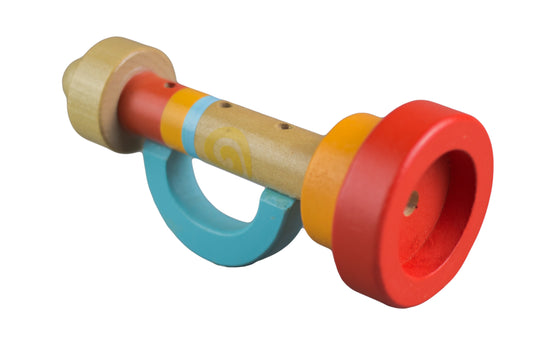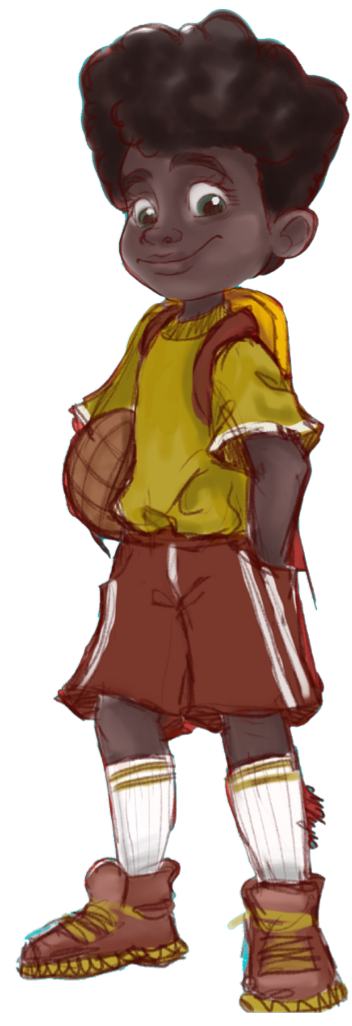Play is crucial for childhood development as it fosters cognitive, social, emotional, and physical skills. It helps little ones develop creativity and problem-solving skills and build self-confidence while promoting communication and teamwork abilities. Play is fun, yes, but it’s also essential for a well-rounded upbringing.
What Is Onlooker Play?
Onlooker play is just what it sounds like: a form of play observed in children where they remain passive spectators of others' play activities. Basically, they watch and show interest without actively participating. While it may seem like a non-participatory style, onlooker play still offers opportunities for learning and social interaction, allowing children to observe and absorb new ideas, behaviors, and skills from their peers.
Onlooker play can be a stepping stone to other types of play as children gradually become more comfortable and confident in engaging with others in different play styles. This style of play typically occurs in early childhood, preschool, and school-age children.
Researcher Mildred Parten first introduced the concept of onlooker play in her study on the stages of social play among children. Parten's work laid the foundation for understanding the different types of play and their significance in children's social and cognitive development. Since then, onlooker play has been widely recognized and studied by researchers, educators, and child development experts.
What Are the Benefits of Onlooker Play?
Social and Emotional Development
When children participate in onlooker play, they observe the social interactions of others and learn different norms, rules, and roles when interacting with others. They can develop empathy and understanding from this perspective, picking up on talking skills and emotional intelligence from others.
These skills are typically tricky to explicitly teach without letting the children experience the feelings that go alongside them, so allowing little ones to learn from the modeling of other children is a great way to introduce these skills naturally.
This type of play can also help reduce social anxiety, providing a low-pressure environment for littles to familiarize themselves with group dynamics and become comfortable before having to participate fully.
Cognitive Development
Along with the confidence-building impact of onlooker play comes conflict resolution skills. Children can observe different things that make conflicts arise and how others work through these problems, mentally notating the dos and don'ts of problem-solving. This encourages critical thinking, creativity, and innovation.
When little ones listen to conversations and narratives during playtime, they can expand their vocabulary and language comprehension, improving their communication abilities. They work on their memory recall, imitation, and pretend play as well.
Onlooker play encourages curiosity and learning. It takes away the pressure of participation, allowing them to sit back and learn from others’ experiences.
Physical Development
Despite not directly engaging, onlooker play can positively impact physical development in several ways. By observing other children manipulate objects and engage in activities that require fine motor control, the onlooker child may mimic these actions and improve their own fine motor skills. For example, watching others build with blocks or engage in arts and crafts can inspire the onlooker to try these activities later, enhancing their hand-eye coordination and dexterity.
Onlooker play often involves watching physical activities like running, jumping, or climbing. Seeing other children perform these actions can motivate the onlooker to eventually join in, promoting the development of their gross motor skills. Eventually, they may feel more confident participating in these activities, which helps in further refining their physical abilities.
For instance, watching other children catch a ball or ride a bicycle can help the onlooker understand the movements involved and potentially improve their own coordination when they decide to participate. Watching others engage in activities that challenge their balance, such as climbing a tree or walking on a beam, can enhance the onlooker's body awareness and balance skills. While the act of watching doesn’t sound like it would impact one’s physical development, they are learning body awareness and spatial orientation through observation.
Play Ideas To Encourage Onlooker Play
Onlooker play typically occurs organically, but as a parent, you can do certain things to intentionally set the scene and encourage this type of play.
Setting the Stage for Onlooker Play
First, be sure you’re providing a safe and supportive environment for all children involved in this play. You can discuss clear boundaries and safety measures with your children and create a safe area with age-appropriate toys and activities. Open-ended toys or fun play-pretend props allow children to explore and take ownership of their playtime, expanding on the benefits discussed above.
The play area should be comforting and inviting and have opportunities for both play and simple observation. The key is to remove the pressure of participation and allow space to just sit, watch, and learn.
When encouraging onlooker play, you don’t need to be prominently involved. In fact, allowing your child the freedom to decide to participate in the play or watch may be even more effective. If they feel you’re encouraging them too much or watching what they do, they may feel more pressured to join in before they’re ready.
It’s not uncommon for parents to want their children to engage with others and worry when they don’t do so, but knowing what onlooker play is and why it’s so important can help soothe these concerns so you can find comfort in your child’s stage of play development.
Role-Playing and Pretend Play
To encourage pretend play or role-playing, set out costumes, props, or backdrops that inspire this use of imagination. If you want to encourage storytelling and the use of imagination, you may provide and talk through some story starters or prompts, helping littles engage in fun, make-believe scenarios.
Dramatic play is fun for both the participants and onlookers. It is entertaining while providing many benefits and opportunities to learn, and children can benefit from both active participation and taking on an onlooker role.
Games and Group Activities
Games allow children to develop team-building skills and learn the crucial act of collaboration. They teach them to share and take turns, learning the etiquette of interacting with others. If you’re planning to encourage onlooker play through group activities, setting expectations will be important. There can often be more pressure to participate when a game is set up at a table.
You can talk through the rules and instructions of the game, how a structured group would play, and explicitly set the tone that not everyone has to join in. Encourage little ones to watch others play as an opportunity to learn if they don’t feel comfortable joining in right away.
Art and Creativity
Open-ended art activities are wonderful ways to foster creativity and exploration. Onlooker play can play a fascinating role in promoting artistic expression through observation, especially in activities like still life drawing and nature scavenger hunts.
In still life drawing, a group of children is presented with a set arrangement of objects, typically on a table, and encouraged to draw what they see. Onlooker play can be quite beneficial in this context. When some children actively start drawing, others may initially observe their friends closely. By watching how others approach the task, they can pick up different techniques and ways to go about the task. Observing the creative process of their peers can inspire them to try their hand at drawing as well.
In a nature scavenger hunt, children explore their surroundings to find and collect various natural items, such as leaves, rocks, flowers, or other interesting objects. Onlooker play can be a valuable aspect of this activity as well. This allows some children to observe their peers as they explore and collect items in nature. This observation can spark curiosity and encourage the onlookers to participate actively in the scavenger hunt themselves.
When children can watch and observe collaborative art projects such as group murals, collages, or community art initiatives, they learn more about different artistic techniques and styles, as well as ways to go about social interactions and working with others toward the greater good.
Tips for Parents and Caregivers During Onlooker Play
Creating Opportunities for Onlooker Play
By creating a balance between structured and unstructured play times, you provide opportunities for children to both interact in and observe play. You can schedule free-play sessions and offer structured activities in moderation without forcing full-time participation.
Of course, the biggest factor necessary in onlooker play is the presence of others to observe. Setting up sibling or peer interaction by facilitating playdates or playgroups and encouraging cooperative play allows onlooker play to occur in the first place.
Observing and Engaging
As a parent or adult, you are more of a facilitator than a participant. You, too, can be an active observer, balancing guidance and autonomy. Help when necessary, but try not to be too forceful or set expectations that are too high. You can ask open-ended questions to encourage the play to continue, promote critical thinking, and inspire reflection and analysis.
You’d be surprised how much you can learn from watching your children observe others. It may feel unnatural at first to sit back while your children choose to be inactive participants in play, but it's crucial to give them this freedom and take a hands-off standpoint in this play.
Respecting Individual Differences
Some children are naturally more introverted and shy. Providing quiet spaces for observation and being accepting of slow integration will show that you respect their differences and remove the pressure often associated with children’s social interaction.
Along with valuing different personalities, you can appreciate different play styles. This includes embracing diverse approaches to play and celebrating individual strengths, whatever they may be. You want all children to feel welcome and invited into play settings.
The Bottom Line
Onlooker play is a remarkable and often underestimated stage in a child's development. Allowing children to watch and learn from their peers gives them a gentle stepping stone toward active participation in various activities. We can foster learning, creativity, and social skills through observation, encouraging playful learning and growth.
To explore more types of play and where onlooker play can lead, visit our other blog posts that dive into the different types and stages of play in childhood development.
Sources
A Practical Guide to Understanding Onlooker Play in Young Children | Vanderbilt University
The Power of Play | Part 1: Stages of Play | Child & Family Development | Michigan State University
Helping Toddlers Expand Language Skills | Child Mind Institute






